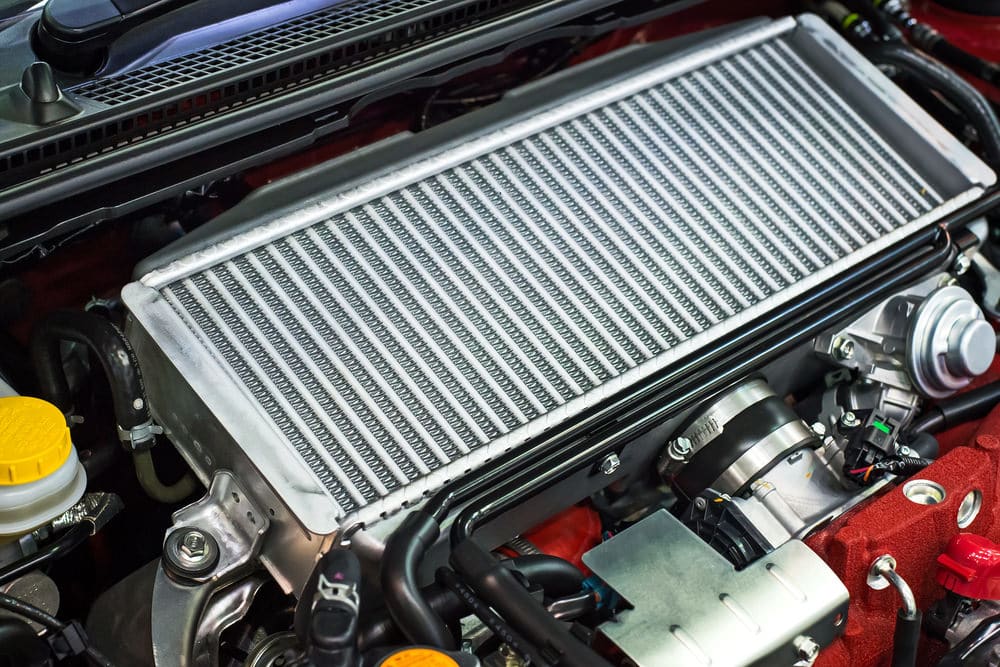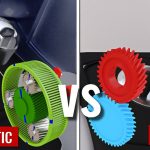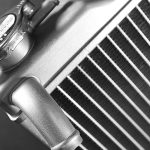
A Radiator, We all know that an overheating engine is bad, but most of us don’t give much thought to how the engine is cooled in the first place until an issue arises. It is a misconception that the cooling system is there to keep everything as cool as possible – it’s actually designed to keep the engine and associated components at the correct operating temperature to allow the most efficient operation.
The main component of the cooling system is the radiator, which is usually located at the very front of the vehicle, just behind the front bumper. It is joined to the engine by radiator hoses, and the water pump provides the drive that moves the coolant through the system.
The radiator is a large heat exchanger, and most modern radiators are comprised of an alloy core with plastic end tanks attached. The alloy core is filled with narrow passageways, also known as tubes, and the coolant is pumped through these tubes after entering through one of the end tanks.
As the coolant passes through these tubes, the incoming airflow from the vehicle movement draws the heat out of the coolant before it makes its way back into the engine.
For More Press Here
Parts
- Core: The core is the most significant part of the radiator. It’s a metal block with cooling fins that help vent the air. The core is where hot liquid releases heat and gets cooled before being sent through the process again.
- Pressure cap: The pressure cap works to help seal the cooling system so it can remain pressurized. The coolant in the radiator is pressurized to prevent the coolant from boiling. It also keeps the system more efficient.
- Inlet and outlet tanks: These tanks are where coolant flows in and out of the cooling system and are located in the radiator head. Hot liquid flows from the engine through the inlet tank, and once it is cooled, goes out through the outlet tank and back into the engine.
- hoses: Coolant moves through the engine via the radiator hoses. They are important for connecting the inlet and outlet tanks to the radiator and the engine.
Other Important Cooling System Parts
There are other important cooling system parts that work alongside your cooling system, including the water pump and the thermostat.
As mentioned earlier, the thermostat regulates the engine’s temperature. If the engine needs to be cooled, the thermostat will open to allow an influx of coolant. It closes if the engine is at the proper operating temperature.
The water pump pushes the coolant through the system. This component is usually operated by the engine drive belt, which turns on the pump, and spinning blades force liquid through the system as needed. Gaskets and seals keep the coolant contained.
Over time, different parts of the cooling system can begin to wear down
Coolant
This process happens hundreds of times a minute when the engine is at operating temperature, but what about when the engine is cold first thing in the morning? That’s where the engine thermostat comes into play.
This thermostat closes off the engine and radiator to prevent coolant from flowing through the radiator when the engine is cold, so the coolant passes through the engine only. This allows the engine to ‘warm up’ and reach operating temperature quickly, reducing harmful exhaust emissions. Once a certain temperature is reached, the thermostat opens and allows coolant to flow into the radiator.
“What about when the vehicle is stopped?” I hear you ask. Manufacturers have thought of this too, and it’s the job of the cooling fan to pull airflow through the radiator when the vehicle isn’t moving. The coolant temperature sensor tells the engine control computer when the coolant isn’t keeping the temperature in check and will switch the cooling fans on to draw cool, fresh air through the radiator in an effort to bring the temperature back down.
Cooling
The radiator is an amazing piece of automotive technology, working hard in all temperatures to keep your vehicle running as smoothly as possible. If you notice your vehicle overheating or coolant leaking under your vehicle, you may have a problem with your radiator or another part of your cooling system. Not to worry, a qualified technician from AutoGuru will be able to inspect your vehicle’s cooling system and provide a quote for any repairs needed to get you back on the road in no time!
If you want to know about the Exhaust system press here









